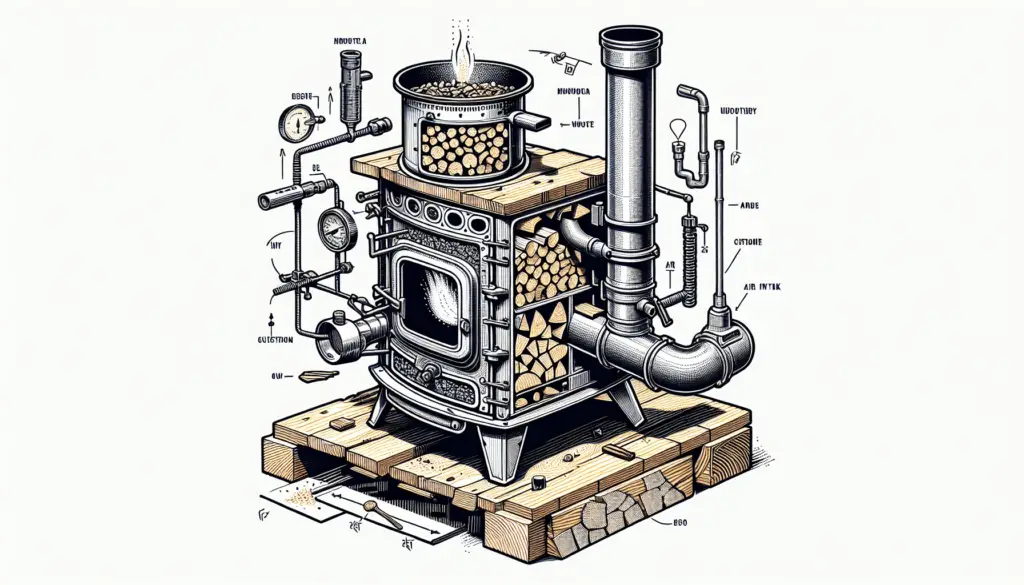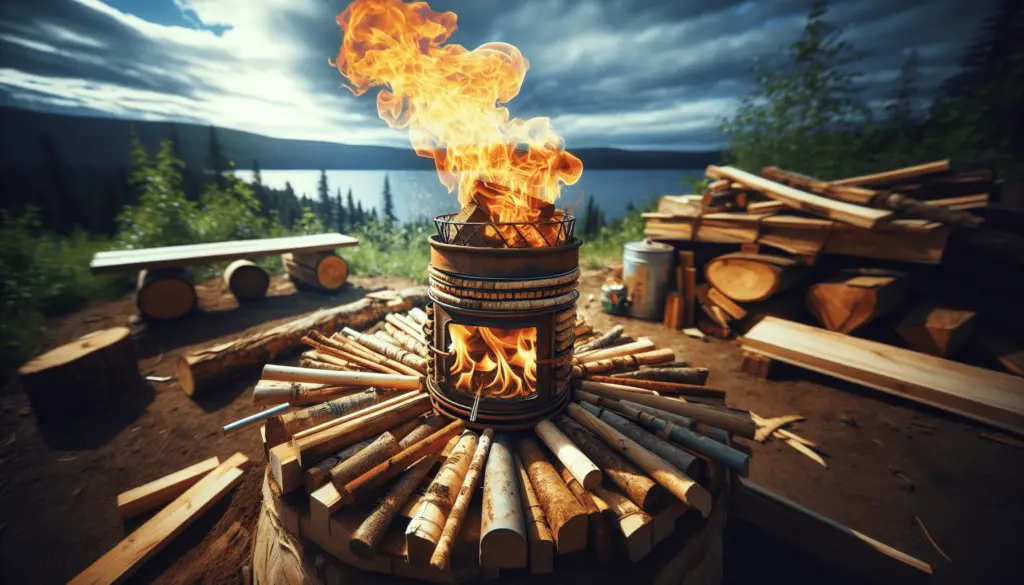Have you ever wanted to cook outdoors using renewable energy?
If you enjoy spending time in nature and cooking outdoors, building your own wood gas stove can be a fun and rewarding project. Not only will you be able to cook delicious meals using renewable energy, but you’ll also reduce your carbon footprint in the process.
Why build a wood gas stove?
Building a wood gas stove is a great way to cook outdoors without relying on fossil fuels. Wood is a renewable resource that can be easily sourced from your surroundings, making it a sustainable and environmentally-friendly option for cooking. Additionally, wood gas stoves are more efficient than traditional open fires, which means you’ll use less fuel and produce less smoke while cooking.
Materials and Tools Needed
Before you start building your wood gas stove, you’ll need to gather some materials and tools. Here’s a list of what you’ll need:
Materials:
- Large tin can
- Small tin can
- Insulation material (such as vermiculite or ceramic fiber)
- Wire mesh
- Metal hose clamp
- Metal grate
- Wood pellets or small pieces of wood
Tools:
- Drill
- Tin snips
- Pliers
- Screwdriver
- Marker
Having all the necessary materials and tools on hand will make the building process much smoother and more efficient.

Step-by-Step Instructions
Now that you have all your materials and tools ready, it’s time to start building your wood gas stove. Follow these step-by-step instructions to create your very own efficient cooking system:
Step 1: Prepare the Large Tin Can
Start by drilling several small holes around the bottom of the large tin can. These holes will allow air to flow into the stove, enabling the wood gasification process to occur. Make sure to space the holes evenly to ensure proper airflow.
Step 2: Insert the Small Tin Can
Next, place the small tin can inside the large tin can. This smaller can will act as the combustion chamber where the wood will be burned. Position it in the center of the large can, leaving enough space around the edges for airflow.
Step 3: Fill the Gaps with Insulation Material
Fill the gaps between the small and large cans with insulation material. This will help retain heat inside the stove and improve its efficiency. Vermiculite or ceramic fiber are excellent choices for insulation due to their heat-resistant properties.
Step 4: Create a Grate
Using the metal grate, create a platform inside the large tin can to hold the wood pellets or small pieces of wood. This will elevate the fuel off the bottom of the can, allowing air to circulate underneath and promote proper combustion.
Step 5: Attach the Wire Mesh
Cut a piece of wire mesh to fit over the top of the large tin can. This mesh will prevent sparks and embers from escaping while still allowing heat and smoke to vent out. Secure the mesh in place using a metal hose clamp.
Step 6: Start Cooking!
Once your wood gas stove is assembled, fill the combustion chamber with wood pellets or small pieces of wood. Light the fuel using a match or lighter, and watch as the stove efficiently burns wood gas for cooking. Place a pot or pan on top of the stove to start preparing your favorite outdoor meals.

Benefits of a Wood Gas Stove
There are several benefits to using a wood gas stove for outdoor cooking. Here are a few reasons why building one can enhance your outdoor experience:
1. Eco-Friendly
Wood gas stoves are eco-friendly cooking options that utilize renewable resources like wood. By using a wood gas stove, you’ll reduce your reliance on fossil fuels and lower your carbon footprint while enjoying delicious meals in nature.
2. Efficiency
Wood gas stoves are more efficient than traditional open fires, as they burn wood gas rather than producing excess smoke. This means you’ll use less fuel while cooking and generate less waste in the process.
3. Cost-Effective
Since wood is a readily available and affordable fuel source, using a wood gas stove can be a cost-effective way to cook outdoors. You won’t have to worry about purchasing expensive canister fuels or running out of gas while camping or hiking.
4. Portability
Wood gas stoves are lightweight and portable, making them easy to bring along on outdoor adventures. Whether you’re camping, hiking, or picnicking, a wood gas stove can provide a convenient cooking option wherever you go.
5. Versatility
Wood gas stoves can be used for a variety of cooking methods, including boiling, grilling, and simmering. With proper temperature control, you can cook a wide range of dishes on your wood gas stove, making it a versatile outdoor cooking tool.

Safety Tips for Wood Gas Stoves
While wood gas stoves are a safe and efficient cooking option, it’s essential to follow some safety tips to prevent accidents and ensure a pleasant cooking experience:
1. Use in Well-Ventilated Areas
Always use your wood gas stove in well-ventilated outdoor areas to prevent the buildup of harmful gases like carbon monoxide. Avoid using the stove indoors or in enclosed spaces where proper airflow is limited.
2. Keep a Fire Extinguisher Handy
Have a fire extinguisher or water source nearby when using your wood gas stove to quickly extinguish any flames that may get out of control. Safety should always be a top priority when cooking with open flames.
3. Handle Hot Surfaces with Care
Wood gas stoves can become extremely hot during use, so make sure to handle all surfaces with care to avoid burns or injuries. Use oven mitts or heat-resistant gloves when adjusting or moving the stove to prevent accidents.
4. Follow Local Regulations
Before using your wood gas stove in public outdoor spaces, be sure to check and follow any local regulations or restrictions regarding open fires. Some areas may prohibit the use of wood-burning stoves to prevent wildfires or protect the environment.
5. Clean and Maintain Regularly
To ensure the longevity and efficiency of your wood gas stove, clean and maintain it regularly. Remove ash and debris from the combustion chamber and grate after each use, and inspect the stove for any signs of damage or wear.

Conclusion
Building your own wood gas stove is a fun and rewarding DIY project that can enhance your outdoor cooking experience. By following the step-by-step instructions provided and considering the benefits and safety tips outlined, you’ll be well-equipped to create an efficient and eco-friendly cooking system for your next outdoor adventure. Embrace the simplicity and sustainability of cooking with wood gas, and enjoy delicious meals in harmony with nature.

